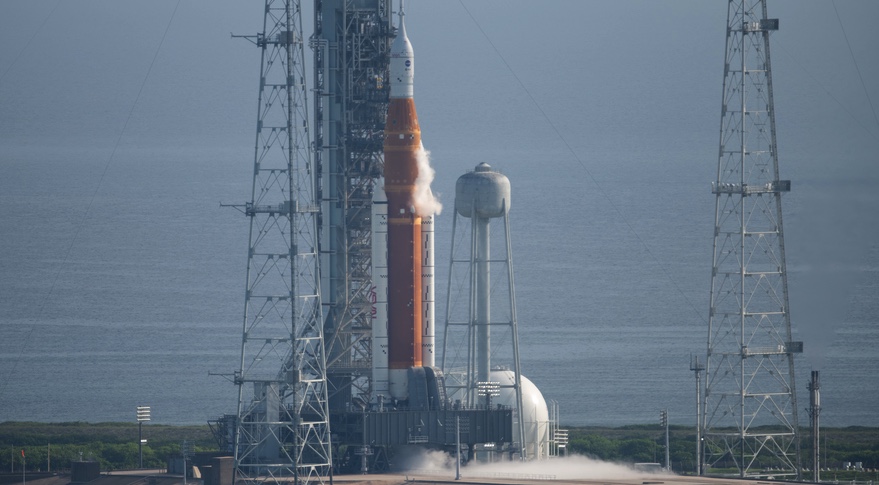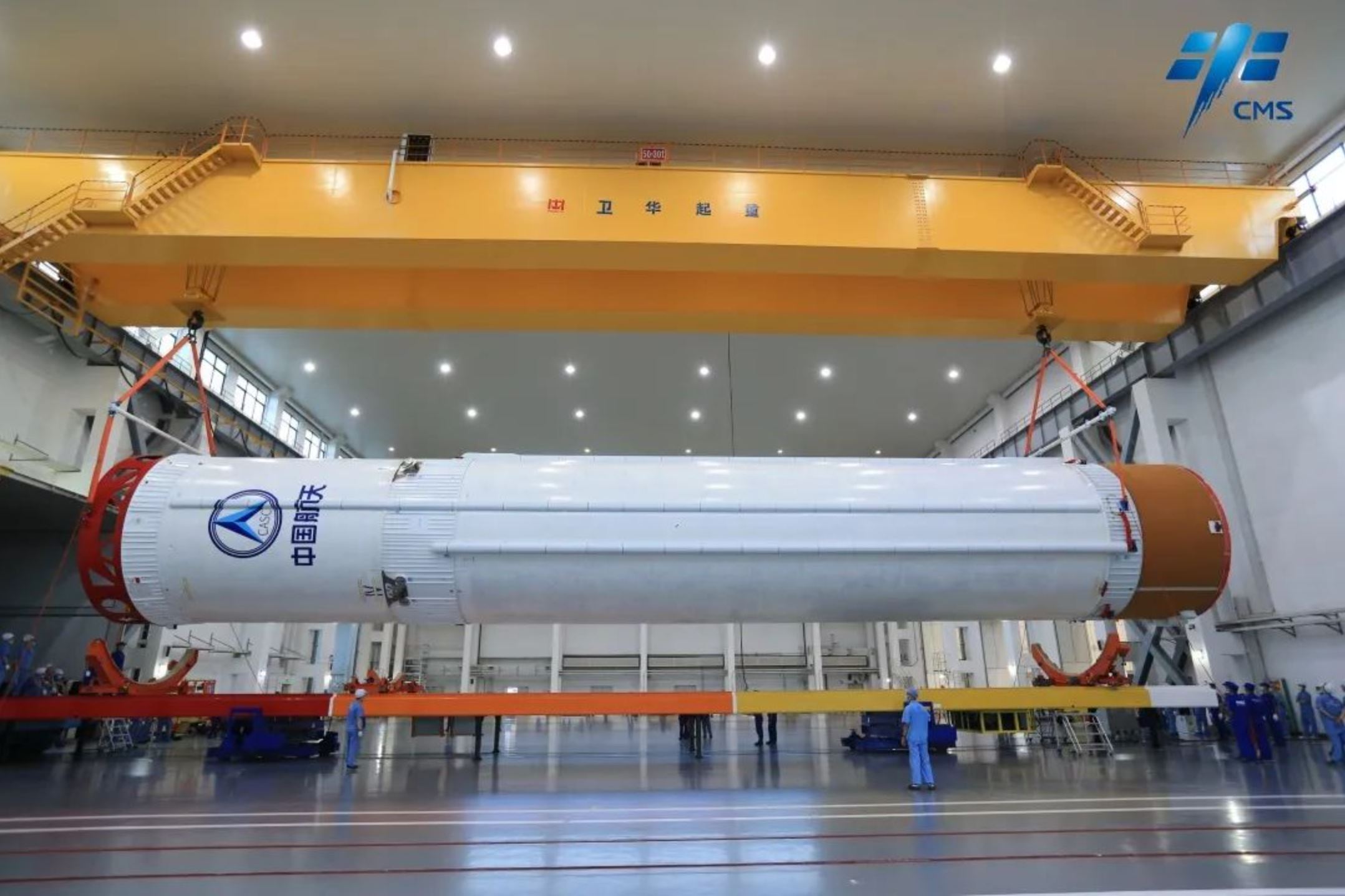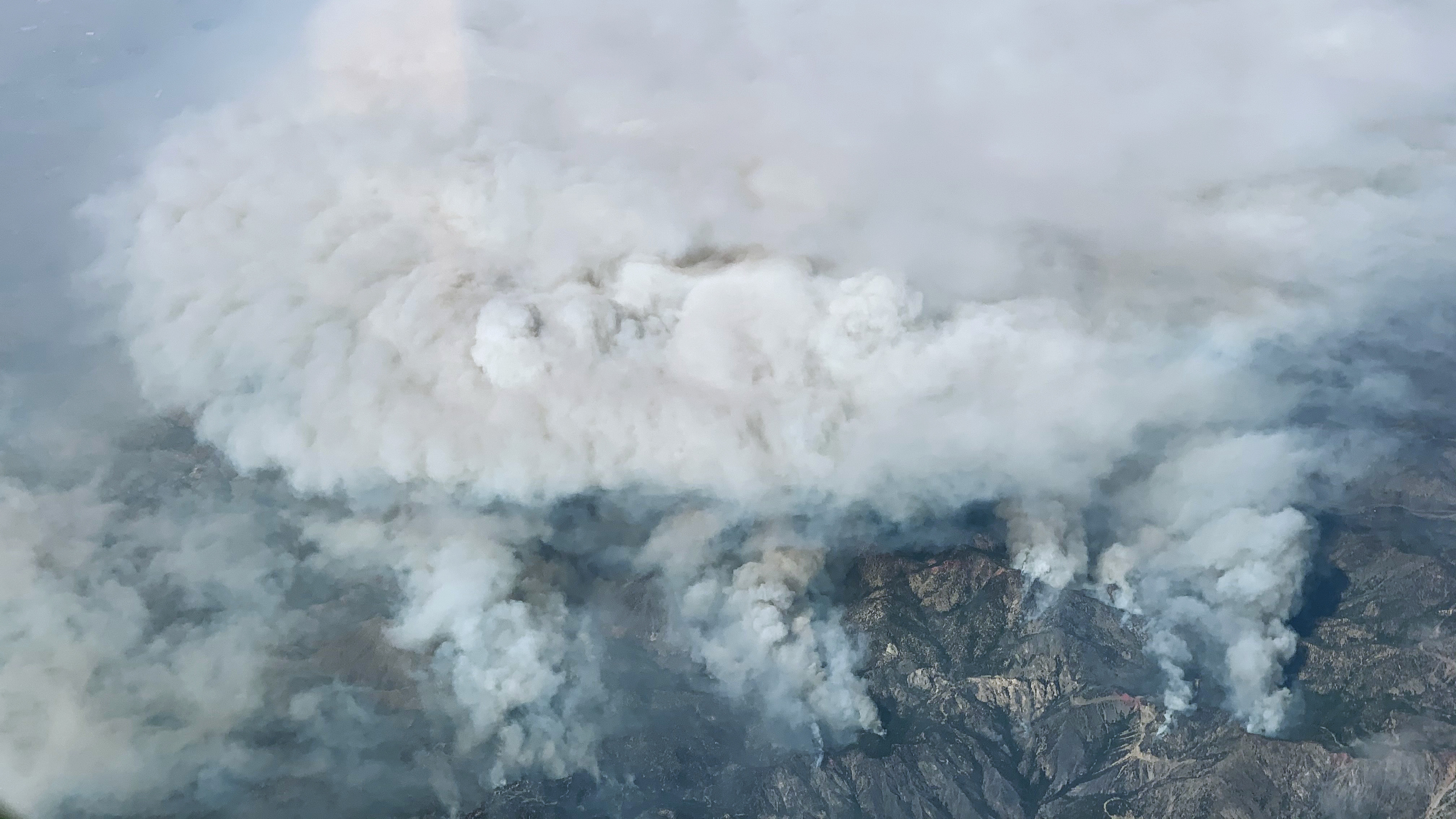Second Artemis 1 launch attempt scrubbed
Original Publication Date: 2022-09-03 15:35

NASA scrubbed the launch, which had been scheduled for a two-hour window. Mission managers concluded that they had run out of time to fix a liquid hydrogen leak. The leak was a large one, said Mike Sarafin, NASA Artemis mission manager. Officials ruled out attempting a launch in the remaining days of the current launch period.
China begins launch campaign for final space station module
Original Publication Date: 2022-09-05 09:44

Work to assemble Long March 5B heavy-lift rocket is underway at Wenchang spaceport as China prepares to complete construction of its Tiangong space station. Components of the 849-metric-ton Long March 5B rocket were recently delivered to Wenchang. The rocket is now being prepared for an early October launch of the 22-ton Mengtian (“dreaming of the heavens’) experiment module. China intends to keep the space station permanently inhabited for at least a decade, gaining human spaceflight experience.
NASASpaceFlight.com
The SSLV or Small Satellite Launch Vehicle conducted its launch debut from Sriharikota, India on Sunday, August 7. An issue with the fourth stage resulted in the satellites being deployed in an unusable orbit. The SSLV program’s genesis was a December 2015 National Institute of Advanced Studies proposal to create a “Small Satellite Launch Vehicle-1”
Commercial Archives
NASA has scrubbed the second launch attempt of the Artemis I mission from the Kennedy Space Center in Florida. A liquid hydrogen leak was detected at the vehicle-to-ground interface on the LH2 Tail Service Mast Umbilical. This was the fourth time teams loaded liquid hydrogen on the vehicle, and the fourth time something in the LH2 TSMU leaked hydrogen.
International Archives
Oleg Artemyev and Denis Matveev returned to work outside the International Space Station on Friday. Friday’s spacewalk served as a follow-up to an EVA that Artemyev and Matveev participated in on August 17. Work was stopped prematurely that day after a power issue manifested on Artemyev’s Orlan spacesuit.
Chinese Long March 3B Launches APStar-6C Communications Satellite – Spaceflight101

China conducted a rare commercial launch of a Long March 3B rocket with the APStar-6C communications satellite for APT Satellite Holdings. Long March 3B lifted off from the Xichang Satellite Launch Center at 16:06 UTC on a mission of under half an hour to lift the spacecraft into an elliptical Geostationary Transfer Orbit. Confirmation of launch success was provided by APT Satellite around 40 minutes after liftoff.
Blue Origin’s New Shepard Reaches new Heights in latest Test Flight – Spaceflight101

Blue Origin returned to its West Texas testing grounds on Sunday for the eighth flight of its reusable New Shepard launch system. Sunday’s flight marked the second for this particular set of hardware, following up on the successful December 2017 mission that debuted “Crew Capsule 2.0” The mission was designed to expand the vehicle’s operational envelope by sending it to a peak altitude of 107 Kilometers, a new record for New Shepard.
ISS Updates – Spaceflight101 – International Space Station

A veteran NASA spacewalker and an EVA rookie from Japan ended their week with nearly six hours of work outside the International Space Station. The restoration of the Station’s Mobile Servicing System started last year and continued in January to provide Canadarm2 with a new pair of grappling hands.
Featured – Spaceflight101

SpaceX Falcon 9 takes to the skies over Florida’s Cape Canaveral Monday afternoon. The Falcon 9 is lifting a flight-proven Dragon spacecraft into orbit for a critical delivery of science gear, supplies and maintenance hardware to the International Space Station. It is the first of at least six cargo ships inbound to the U.S. Segment of ISS this year.
News – Spaceflight101

Russia's Rockot booster is set to blast off from the Plesetsk Cosmodrome at 17:57 UTC on Wednesday with the Sentinel-3B multi-function satellite. The rocket will carry a Russian Rockot booster with a Sentinel-3B satellite as its payload.
Re-Entry: Long March 11 Rocket Body – Spaceflight101

The CZ-11 fourth stage used leftover propellant for a partial de-orbit maneuver, lowering its perigee to 120 Kilometers. It is reportedly built around a YF-50 main engine and in a nominal mission conducts the orbital circularization after the three CZ-11 stages finish their job.
NASA Studies Find Previously Unknown Loss of Antarctic Ice – Climate Change: Vital Signs of the Planet

New research on Antarctica, including the first map of iceberg calving, doubles the previous estimates of loss from ice shelves. The greatest uncertainty in forecasting global sea level rise is how Antarctica’s ice loss will accelerate as the climate warms. “Antarctica is crumbling at its edges,” says JPL scientist Chad Greene, lead author of the calving study.
NASA Data on Plant ‘Sweating' Could Help Predict Wildfire Severity – Climate Change: Vital Signs of the Planet

NASA study uses data from the ECOSTRESS instrument aboard the space station to better understand why some parts of a wildfire burn more intensely than others. Some areas where vegetation had sufficient water burned more severely, possibly because fires had more fuel to consume. In California, detailed insights on the relationship between wildfire and the availability of water to vegetation could help fire-management officials identify not just whether an area will likely catch fire, but how serious the damage will be if it does.
My Favorite Martian Image: ‘Enchanted’ Rocks at Jezero Crater

The rocks of the crater floor are igneous in origin, having formed billions of years ago from molten rock. Over time, mud, silt, and sand brought into the lake that filled Jezero compressed and solidified into thin layers of sedimentary rock. If microscopic organisms were also present during sedimentary rock formation, they could have been captured within the layers.
NASA’s Webb Takes Its First-Ever Direct Image of Distant World

Astronomers have used NASA’s James Webb Space Telescope to take a direct image of a planet outside our solar system. The exoplanet is a gas giant, meaning it has no rocky surface and is not habitable. The finding is detailed in NASA’s latest JWST blog entry.
Explore the Solar System With NASA’s New-and-Improved 3D ‘Eyes’

Trace the course Artemis I will take to lunar orbit, or touch down with Perseverance. Learn the basics about dwarf planets or the finer points of gas giants. Ride alongside no fewer than 126 space missions past and present. You can even follow the paths of spacecraft and celestial bodies as far back as 1949 and as far into the future as 2049.
Engineers Solve Data Glitch on NASA’s Voyager 1
Engineers have repaired an issue affecting data from NASA’s Voyager 1 spacecraft. The probe’s attitude articulation and control system (AACS) began sending garbled information about its health and activities to mission controllers. The team has since located the source of the garbled information: The AACS had started sending the data through an onboard computer known to have stopped working years ago.
NASA’s Webb Detects Carbon Dioxide in Exoplanet Atmosphere

First clear evidence for carbon dioxide ever detected in a planet outside the solar system. Understanding composition of a planet’s atmosphere is important because it tells us something about the origin of the planet and how it evolved. “Detecting such a clear signal of carbon dioxide on WASP-39 b bodes well for the detection of atmospheres on smaller, terrestrial-sized planets,” said Natalie Batalha of the University of California at Santa Cruz.

